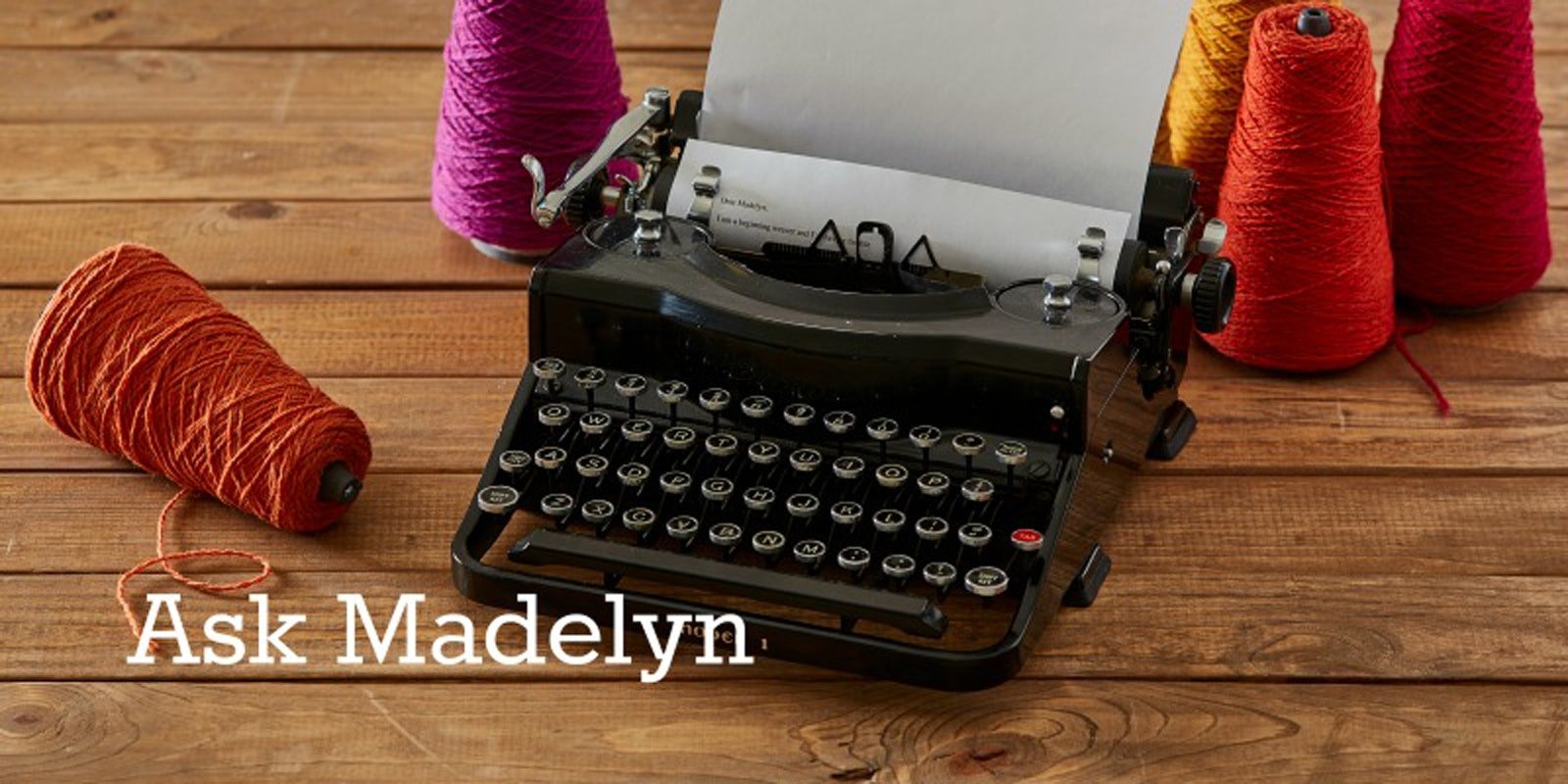Hi Madelyn,
Although I know that traditionally overshot was used for coverlets, I have an idea for a shawl. I'm willing to sample, but I'm not sure where to start. I would like to weave it using 18/2 wool/silk as warp and tabby weft. Can I use that yarn doubled for my pattern weft? Normally with this yarn, I use a sett of 24 or 26 ends per inch for plain weave. If I use 24 epi, will I be in the ballpark to weave a lovely drapey shawl? I don't want it to be too stiff so perhaps I should start with a looser sett?
And, for the pattern weft, do you think a shuttle with 2 bobbins is better than a single bobbin with doubled threads?
Thanks for your help,
Vanessa
Hi Vanessa!
Overshot drafts presume a 50/50 plain-weave ground cloth. Since the tabby weft creates that cloth and alternates with a pattern weft, if you sett your 18/2 wool/silk at 24 ends per inch and follow an overshot treadling draft from a specific source, the picks per inch should be double the number of warp threads per inch (I.e., 48) to produce the intended results. (Treadling drafts usually give the number of pattern picks that create square motifs--as wide as they are tall--if the weft sett is twice as many picks per inch as warp threads per inch.)
Most traditional overshot fabrics, as you say, are firmly woven utility fabrics, such as bedspreads or table runners, and you want something soft and drapable. A check of the Master Yarn Chart shows the normal sett for plain weave in 18/2 wool/silk to be 24 ends per inch. If you use that sett, you will probably have to beat too firmly to create a drapable fabric with 48 picks per inch. To reduce fabric density, you have two choices: one is to make the sett slightly more open, 20 ends per inch, say. The other is to reduce the number of pattern picks in all the larger blocks. This will allow fewer picks per inch than warp threads per inch but create square motifs. I think I would start with both solutions, 20 ends per inch and eliminating a few picks so that the motifs are symmetrical but the beat not terribly firm.
Be sure to put on extra warp for sampling to see what number of picks works well to create symmetrical motifs (and wash the sample to check the size and look of the finished motifs). I would sample on the complete threading (warping the loom at 20 ends per inch). If the washed sample proves too loose in both warp and weft directions, I’d then re-sley to 24 ends per inch. The shawl would then be slightly narrower, but it is always better to sample on the actual width of an intended piece to accurately judge the result.
Pattern-weft thickness is usually two to three times the thickness of the warp and tabby weft. Your 18/2 wool silk doubled would work well. The slight fulling that the wool in the wool/silk yarn will do during washing will help the pattern weft “cover” the blocks of pattern so that the tabby weft doesn’t show through (the usual problem if the pattern weft is slightly too fine). That same fulling will make your shawl look lovely after washing even if it looks a little loosely woven on the loom.
I LOVE double-bobbin boat shuttles when I’m doubling the weft. You have to get used to “throwing” the shuttle when you use it; it only works if the unwinding bobbin jerks on both weft threads enough to turn them both smoothly at the selvedges. Doubling the weft on a single bobbin always requires adjusting the two lengths at the selvedge unless you ply them on a spinning wheel first. (I like them not plied better, anyway, for covering the blocks. They will tend to lie side by side like a ribbon.)
Madelyn

